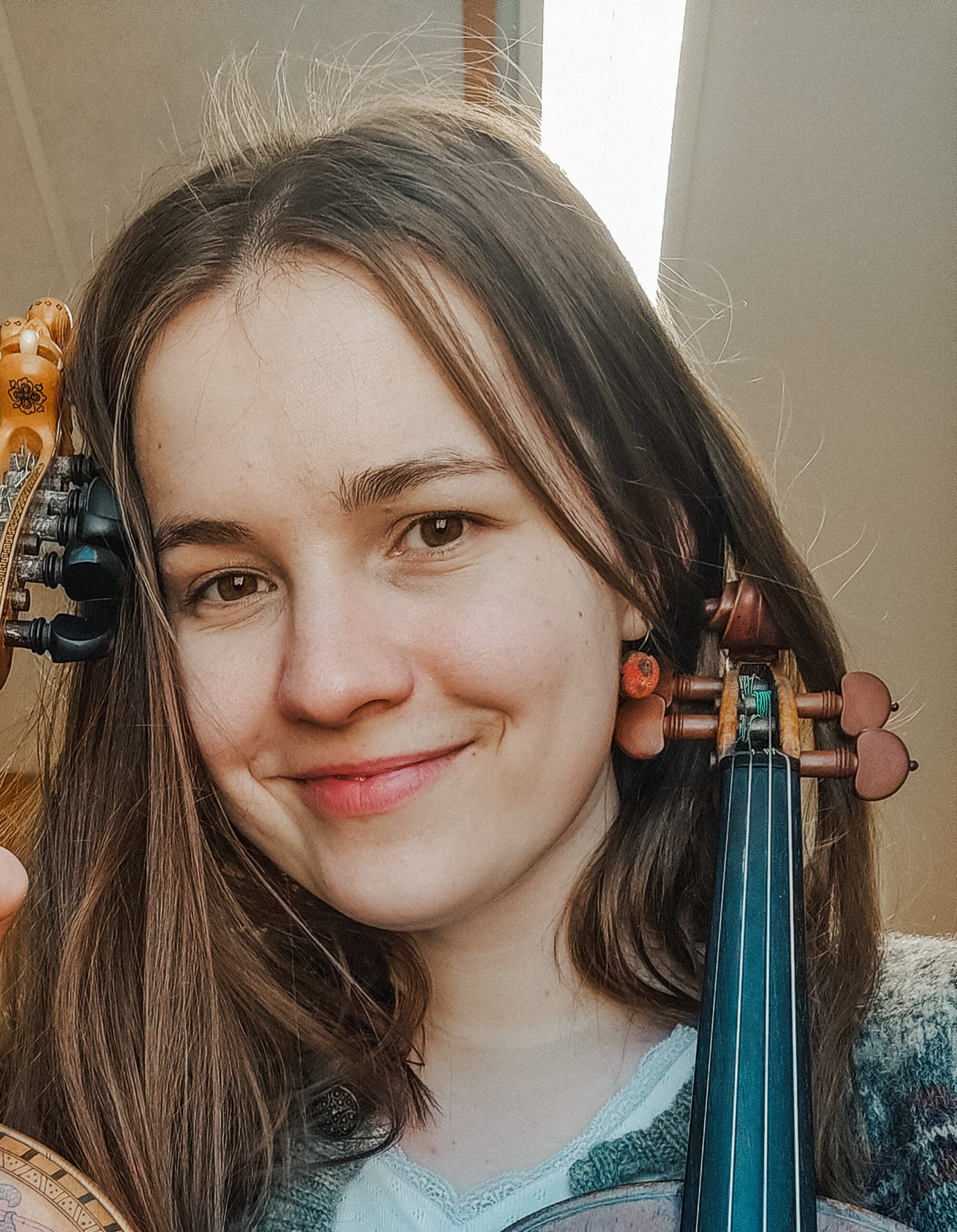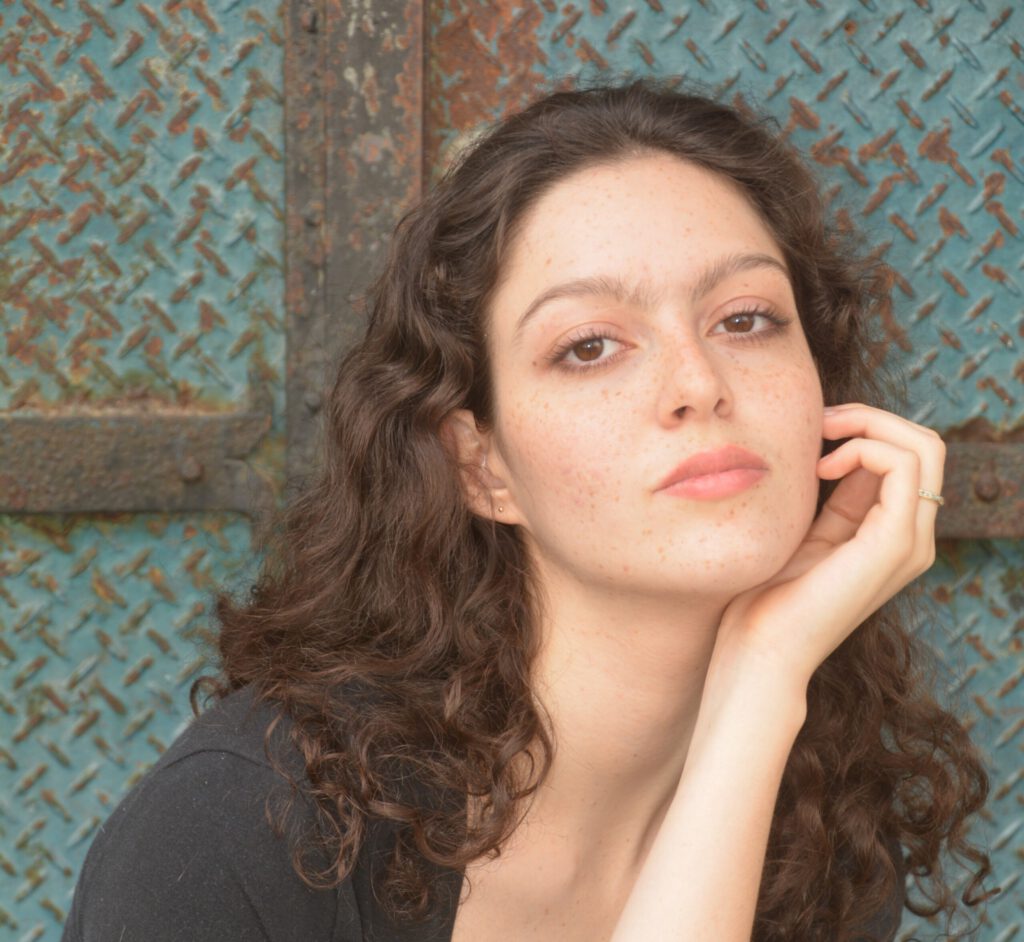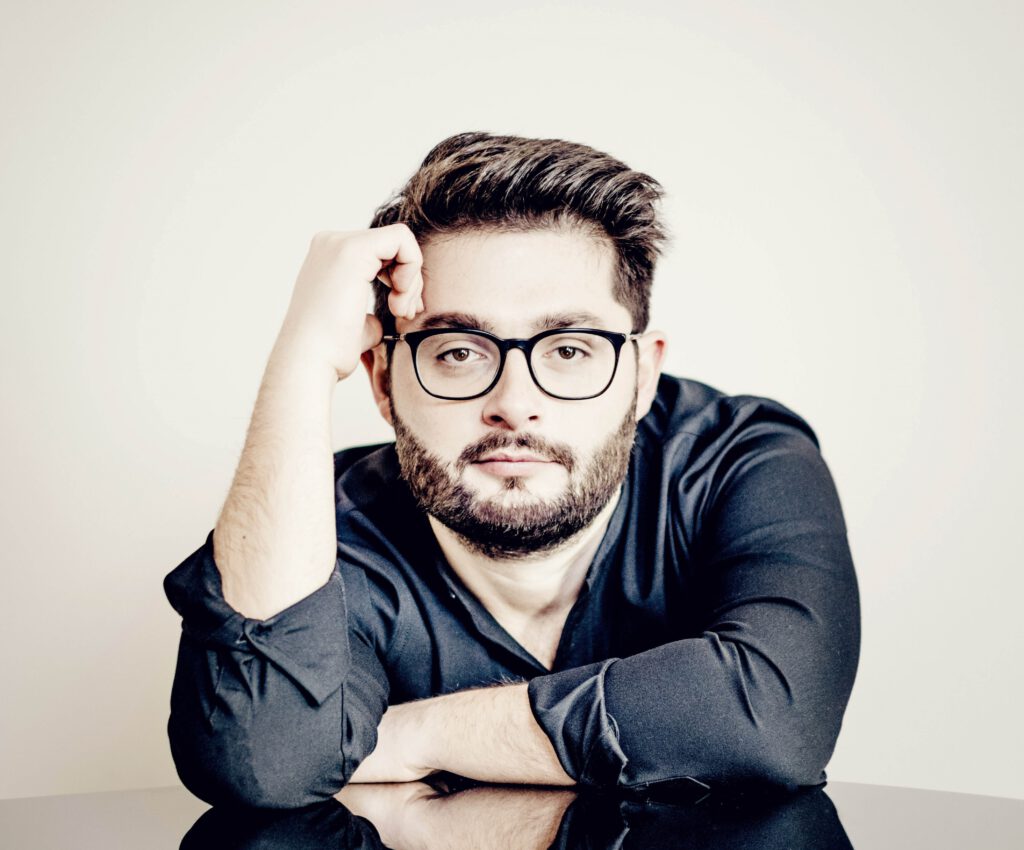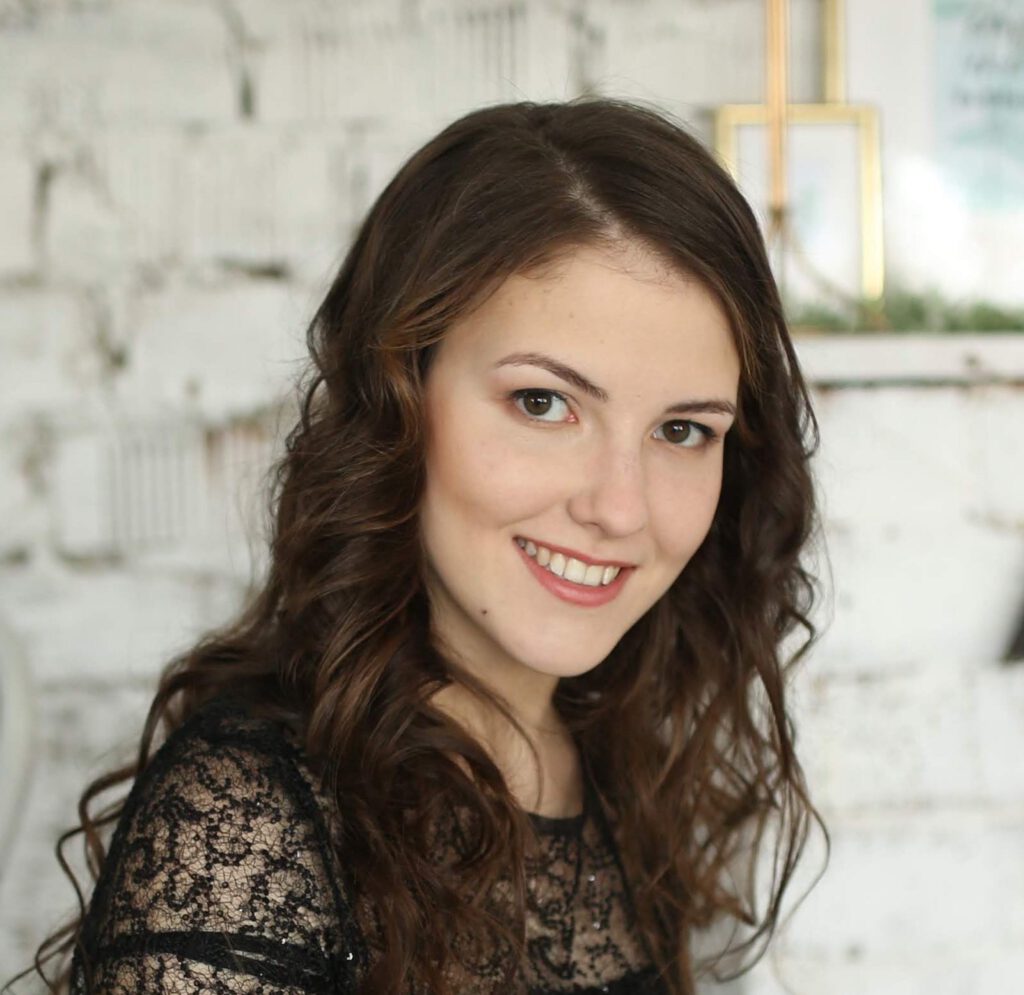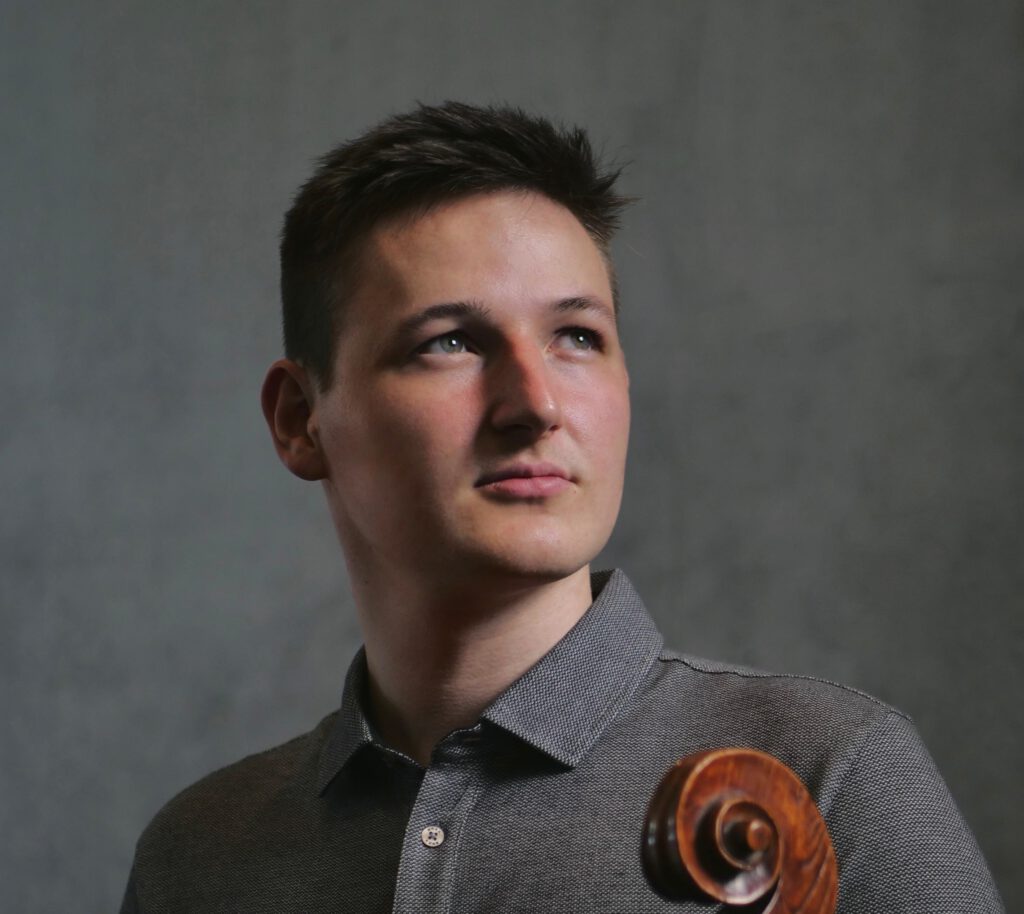“With music and images, the concertgoers can be accompanied through various moods and emotions”
“Learning and playing the violin is a good way to learn something about life and acquire new experiences,” says Saimi Kortelainen. She studies the violin at the Norwegian Academy of Music in Oslo and in May 2024 participated in the Erasmus+ Blended Intensive Programme at the mdw. In this programme, students from various universities complete a short-term, joint mobility activity combined with a virtual component, such as online learning. Students from the mdw, the Norwegian Academy of Music, the Royal Conservatoire The Hague, and the Liszt Ferenc Academy of Music Budapest worked together for a week at the mdw, concluding with a multimedia concert presented as part of the mdw festival KlangBildKlang. The centrepiece of the concert was three movements from Kjell Habbestad’s suite Woman in three Stages, based on Edvard Munch’s Frieze of Life, which the composer rescored for a small ensemble especially for this project. The rest of the concert covered a broad musical spectrum: folk music, pieces for traditional instruments, and works by Webern, Bartók, Grieg, and Mozart, accompanied by digitally processed paintings in the stage background by artists such as Munch, Klimt, and Schiele.
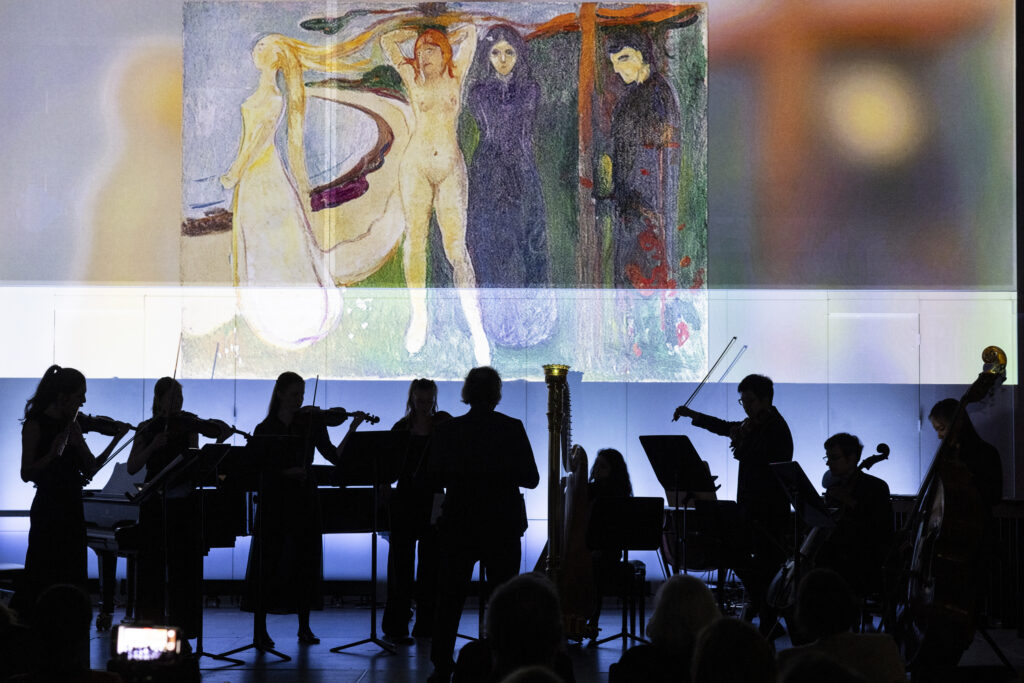
Saimi Kortelainen worked with artificial intelligence for the visualisation of two works on the programme. With the AI programme Midjourney, she created, among other things, visualisations “in the style of paintings by Chagall”. Saimi: “I gave the programme the task of generating ‘forms of love in the style of Chagall’. One could even recognise brushstrokes in the resulting images. People who don’t know Chagall’s painting might think they’re by him.” In her work with the programme, she modified the results several times by, for example, changing the words in the commands. “You have to develop the ability to communicate with the programme, just like you have to learn to communicate with a colleague,” says Saimi. Concert formats with music and visualisations have advantages and disadvantages: “The audience members often hear with their eyes, and the multimedia experience creates an exciting atmosphere in the space. With music and images, the concertgoers can be accompanied through various moods and emotions. On the other hand, it has the potential for detracting from the significance of a piece,” says Saimi.
Saimi Kortelainen is a classically trained violinist but also performs with traditional instruments, vocals, and improvisation—as she did at the concert at the mdw. “When you play the violin in Vienna, there are certain expectations with regard to your playing. I love subverting these expectations,” says Saimi with a smile.
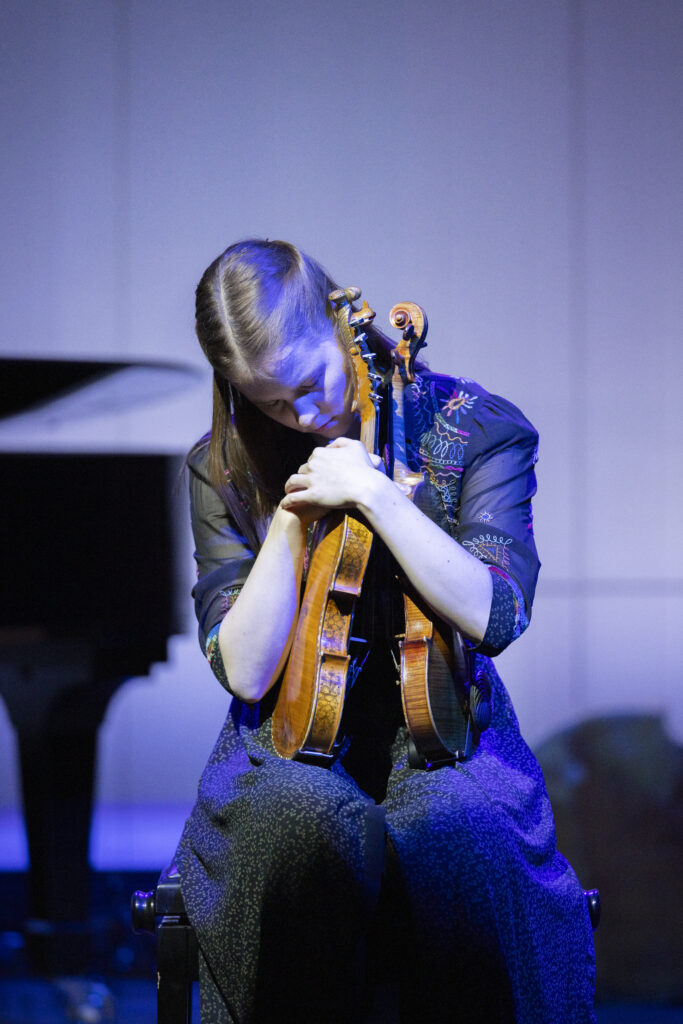
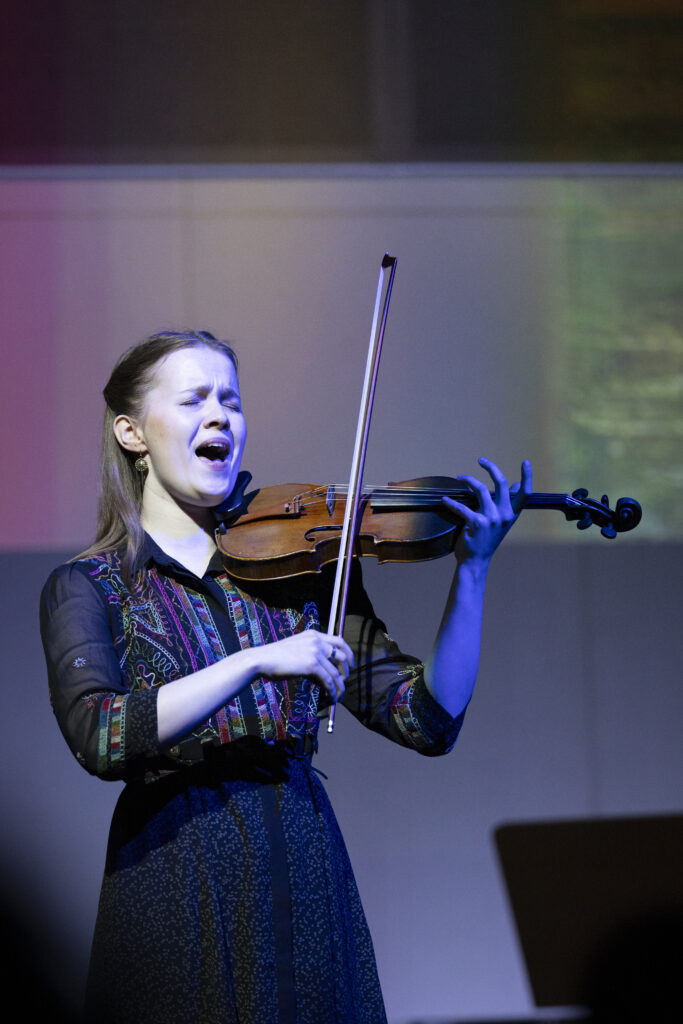
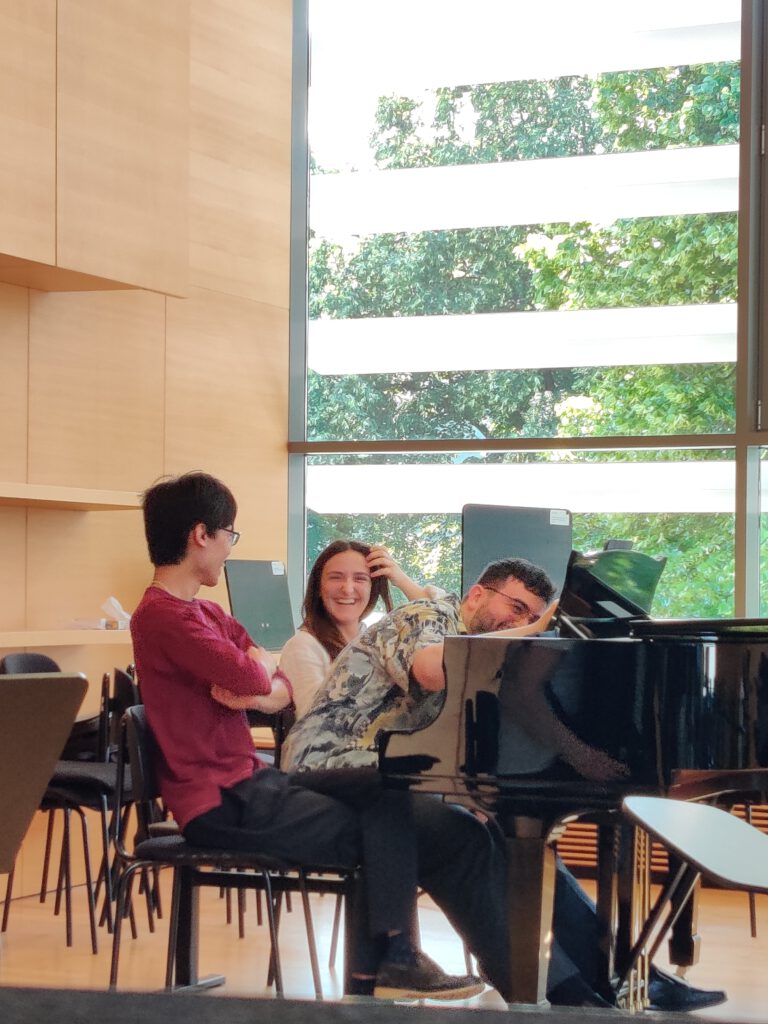
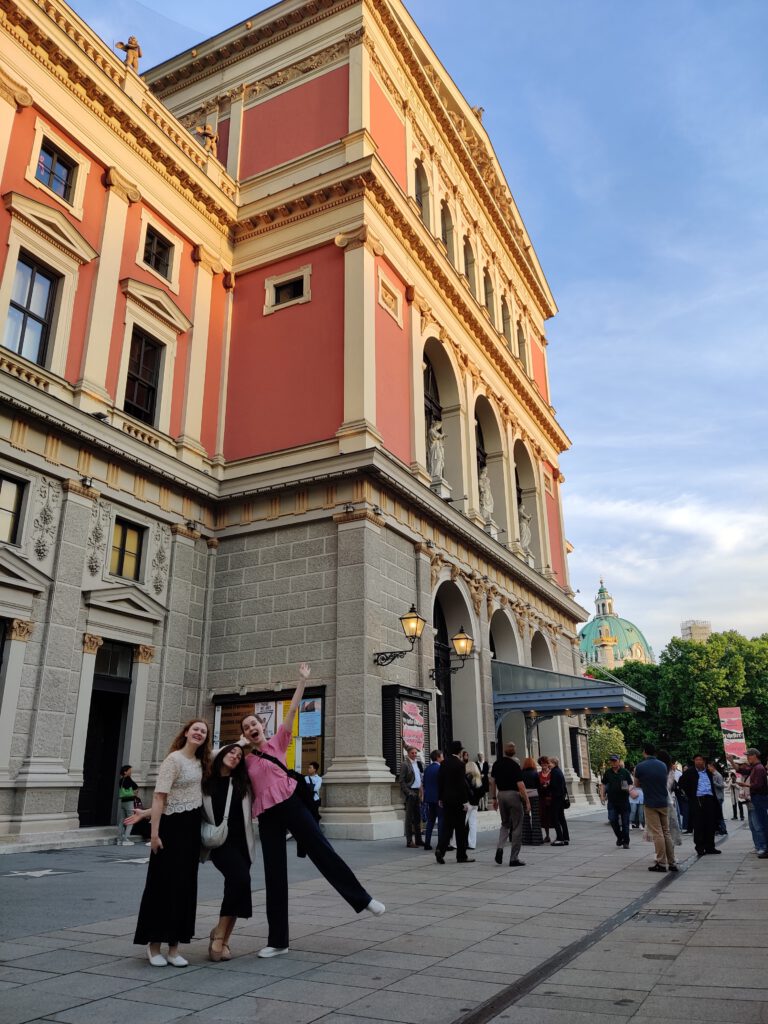
Born into a musical family in Estonia, she began playing in youth orchestras at an early age, enabling her to travel a great deal. “I always loved meeting people from different countries. Studying the violin allowed me to do that,” Saimi comments. She began working on a bachelor’s degree at the University of Music and Performing Arts Graz, but then continued her studies at the Norwegian Academy of Music. In Oslo, she likes the freedom of the curriculum: “Innovation is important in Norway. There, I can play the violin at a high level and simultaneously devote myself to traditional music.” Among other things, she plays the hardanger fiddle, a traditional Norwegian stringed instrument. Saimi also writes music herself and is a member of Trio Lumi. In her education in Austria, she appreciated the structure and technique of playing that she was taught. “What I learned in Austria enabled me to have complete control over my instrument. Only if you have high quality in your technique can you develop as an artist. I went to Oslo to discover my own sound,” remarks Saimi. Before she moved to Oslo, she completed a year abroad at the Sibelius Academy in Helsinki. The many different stations in the course of her education expanded her linguistic repertoire as well. She speaks Estonian, Finnish, Swedish, German, English, a bit of Russian, Slovenian, and Norwegian: “I’m a language nerd. I learned Norwegian in three weeks. Learning foreign languages opens many doors and is one of the most important investments one can make.” Then there is music, “the highest of all languages”. She is currently very happy with her life in Oslo and with the Scandinavian mentality. “In the arts, the focus is often on competition and who is the best. In Scandinavia, the emphasis is on cooperation and mutual support. In the Norwegian culture, equality and humility are important values.”
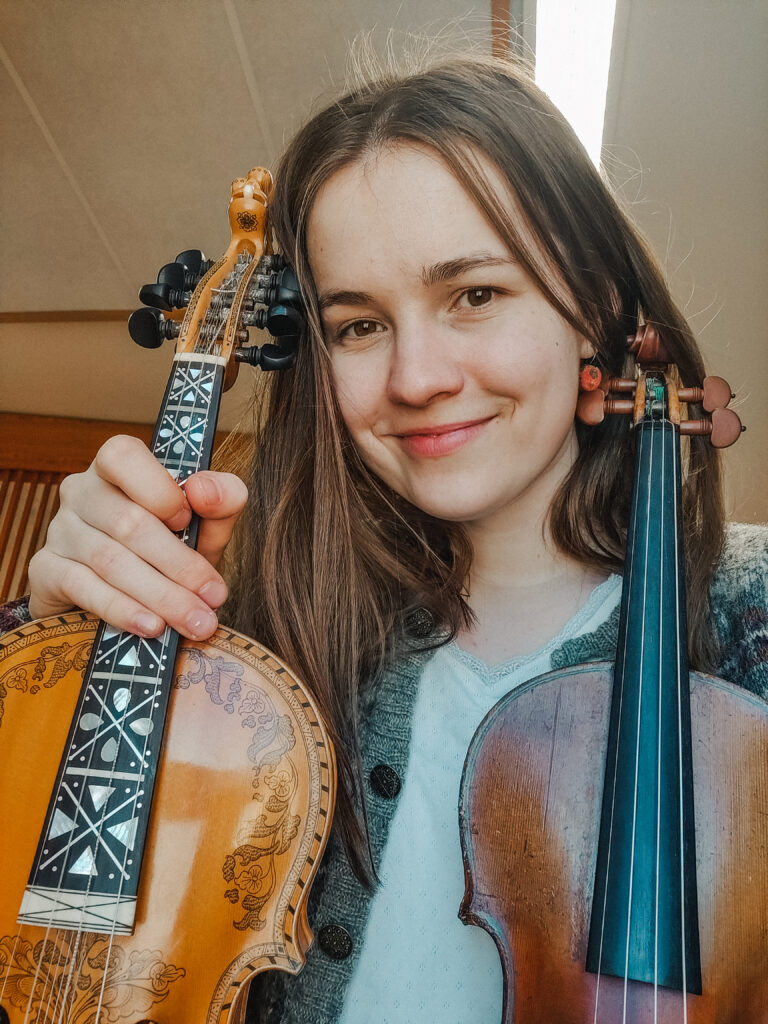
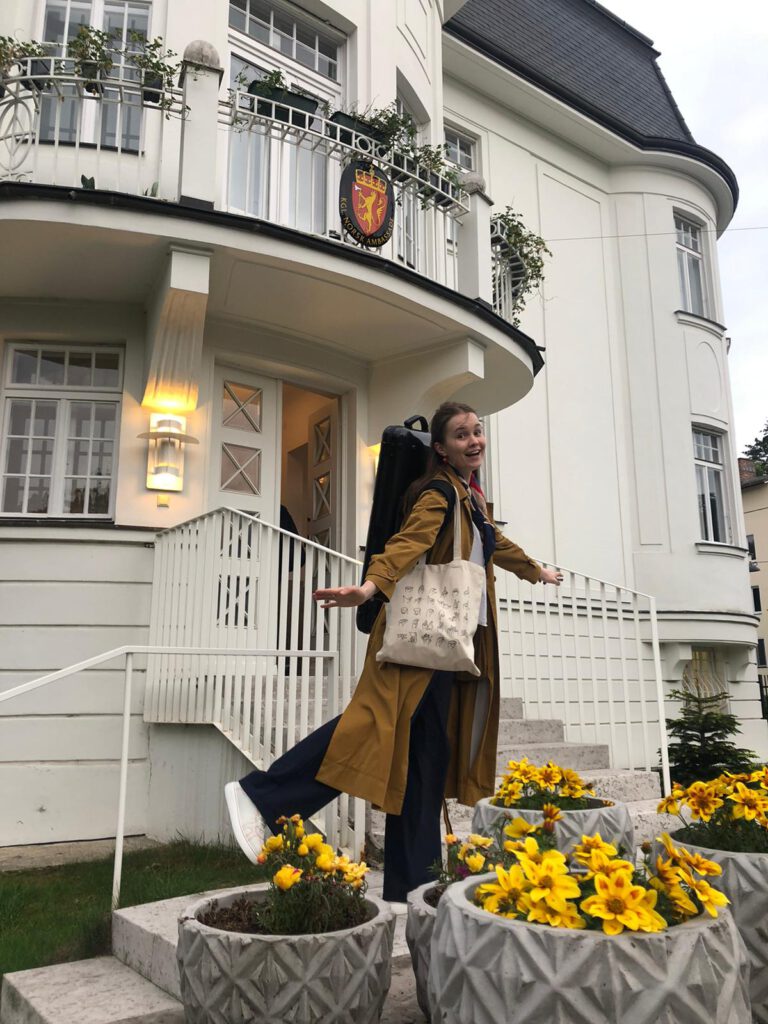
For her artistic career, the young musician would like to “leave behind a kind of legacy, and to inspire my colleagues. I want to continue to avoid being pigeonholed; I want to keep performing classical as well as traditional music.” Saimi could also imagine teaching and running her own production company.
Austrian audiences can experience this multifaceted artist with her Trio Lumi at the European Literature Days on 9 November 2024 at the Minoritenkirche in Krems.
More impressions of the concert at the mdw:


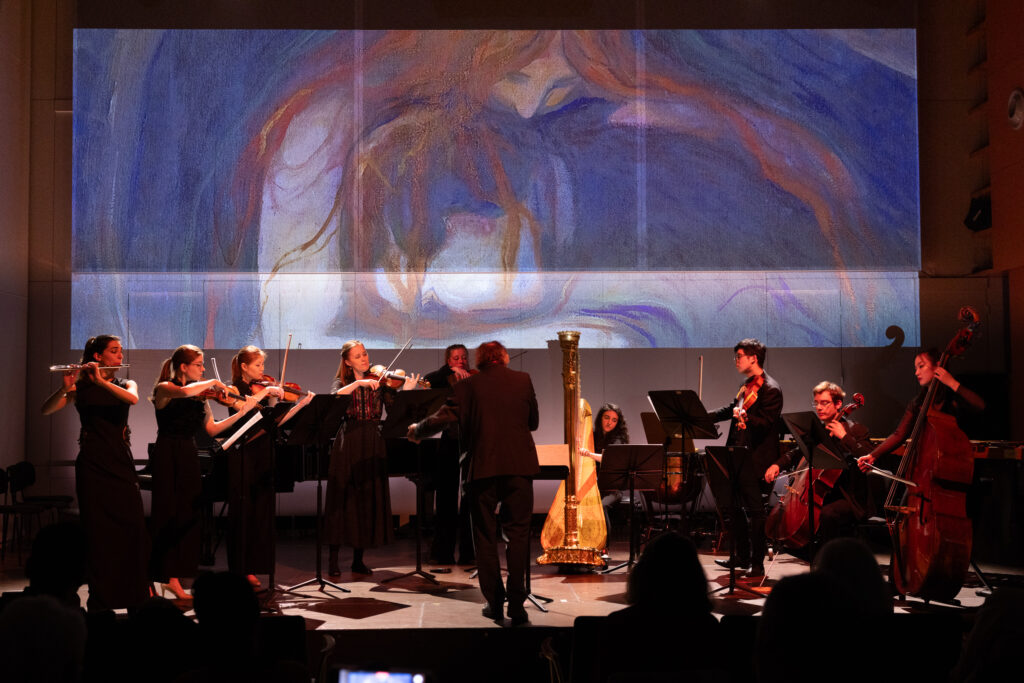
Text: Isabella Gaisbauer

